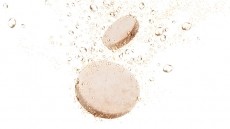Dry flour can come from aroids, new study
according to a new study from Venezuela.
The moisture content and water activity of the flour from the elephant ear (Xanthosoma sagittifolium) and taro (Colocasia esculenta) plants make them suitable for prolonged shelf life, said the researchers from the Central University of Venezuela. "The flours produced at pilot level show that chemical, physical and physiochemical properties were similar to those shown by conventional flours of cereal," the authors stated in publishing the study in the Journal of Food Science. The edible root and tuber from these two plants are already in use as a staple food in many parts of Africa, America, Pacific Islands and Asia. The researchers tested the flours from the tubers for factors such as composition, characteristics, microbiological stability, and rate that starch in the flou reacted with moisture. "The aroid flours obtained in this study could be recommended as ingredients in composite flours," the report said. "These flours are usually suggested for bread making and also for the manufacture of baked goods, snack, pasta and noodles if wheat flour use is to be reduced." The flours were produced using conventional dehydration techniques, the researchers said. The taro flour contained 12.5 per cent more crude fat, 59 per cent more total dietary fibre, 241 per cent more soluble and 26 per cent more insoluble dietary fibre than those from the elephant ear flour. The content of minerals calcium, zinc and iron was also greater in the taro flour. The report said moisture content is a quality factor for preservation and convenience in packing and shipping, and with moisture content of 10.42 per cent and 11.04 per cent for the two flours, these can be considered for prolonged shelf life. The flours could be also considered of potential nutritional quality, the report concluded. "Converting fresh edible portion of tubers to flours will avoid losses of these crops, especially in developing countries," it concluded. "It should also guarantee year-round supplies of the tubers, which should encourage consumption of these flours and may contribute to new product development by regional food industries." Source: Journal of Food Science (Blackwell) OnlineEarly Articles, doi: 10.1111/j.1750-3841.2007.00420.x "Production and Characterization of Xanthosoma sagittifolium and Colocasia esculenta Flours" Authors: E E Perez, M E Gutierrez, E Pacheco de Delahaye, J Tovar, M Lares












